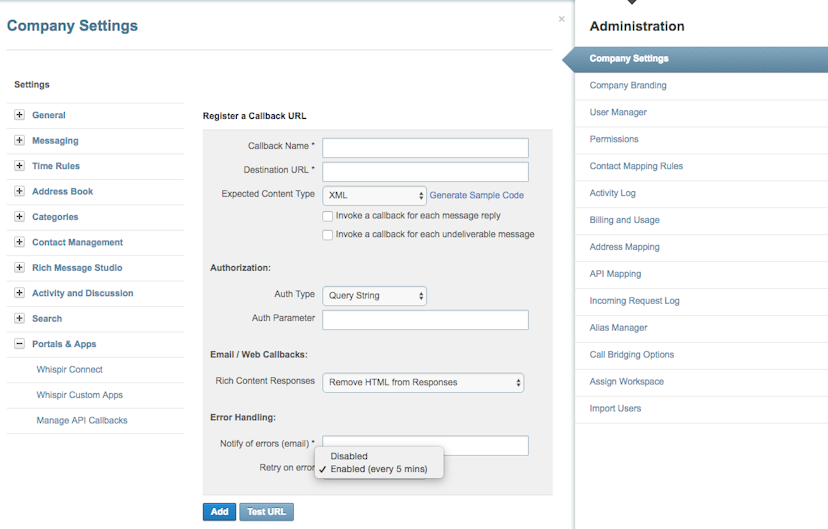The growth of digital communications technology in enabling true global supply chain connectivity.
Key insights:
-
The digital disruption of global supply chains
-
Major technologies impacting the Transport & Logistics sector
-
Realizing the promised value of industry 4.0
-
Rapid business model improvements through SaaS-delivered capabilities
-
Leveraging multi-channel communications technologies for strategic collaboration
The Transport and Logistics sector is facing unprecedented and sustained digital disruption as new technologies, rapidly evolving customer preferences, and new competitors are emerging to revolutionize business models, and the ingredients needed for future sustainability.
Industry 4.0 has finally started to emerge as a real driving force shaping the future of the global supply chain. A confluence of technologies including advanced robotics and artificial intelligence; sophisticated sensors; big data analytics; 3D printing; cloud-enabled business models; high-powered mobile devices; and algorithms to direct motor vehicles (navigation tools, ridesharing apps, autonomous vehicles, and last-mile delivery services) are enabling advanced interoperability across companies, countries, collaborators, and competitors.
With more than $4.6 trillion of annual revenues at stake, the rewards are evident for businesses that can adopt the appropriate vision, strategies, tools, and partnerships to ensure their digital fitness to compete and collaborate in this emerging technology-driven paradigm.
Digital transformation – engaging the value of the industrial Internet of Things
The Physical Internet (PI or π) is allowing manufacturers to redefine how they interact with customers, and how they structure their supply chains, which need to become far more social and data acquisitive for traceability and predictability.
Concepts from internet data transfer are being applied to real-world shipping processes, with smart, eco-friendly, and modular containers ranging from the size of a maritime container to the size of a small box becoming standardized across all businesses and countries. These modular containers are continuously monitored and routed, sharing digital connectivity through the Internet of Things. For the Physical Internet to work in practice, a far greater level of collaboration is needed across the sector.
Most of the 535,000 distribution centers in the US, for example, are standalone operations owned by different companies – improved connectivity, and standardization of physical workflows could create significant efficiencies.
The potential is vast – estimates in the EU logistics sector have shown that a 10% to 30% increase in efficiency would translate into €100-300 billion in cost savings for the European industry.
Rapid technological change
Technology is redefining every element of global supply operations, from manufacturing to shipping, warehousing, competition, collaboration, and customer expectation management. With so many technologies competing for management attention and investment, defining a clear digital strategy to help drive business efficiencies is crucial for future competitive survival.
PwC has quantified the technologies likely to have the greatest current or potential impact on the sector, including data analytics, automation, cloud platforms, and smart warehousing solutions.

New market entrants
Cloud solutions are driving new business models and different channels of engagement, enabling nimble start-ups to enter the logistics industry. New ‘sharing’ business models could impact the sector as much as new technology. And the industry’s current customers and suppliers may end up becoming their greatest competitors.
-
Lean cloud platform enabled startups (e.g asset-light, virtual freight forwarders)
-
High technology ventures, e.g drones, automated cars, self-driving lockers
-
Customers moving into delivery, e.g. Amazon has leased 20 aircraft to manage a greater share of its own shipments and is also using drones for its ‘Prime Air’ 30-minute delivery service pilot.
Changing customer expectations
Customer preferences are rapidly evolving, with both business and consumers expecting flexibility, customization, and speed, while also expecting to pay continually less.
B2B customers are driven by efficiency and transparency. The pressing need for manufacturers to provide greater customization and flexibility in production, in meeting customer expectations for faster time-to-market, decreased defect levels and product customization, is leading to a dramatic disruption of global.
B2C customers: Online commerce has driven a revolution in customer experiences, delivery, and logistics. Customers expect a multi-channel, seamless purchasing experience – they don’t care who delivers their products (shipper-agnostic), but expect the same seamless, flexible experience as they receive from the retailer.
No one-size-fits-all solution exists to address these challenges, so companies are exploring a range of options to find the right fit for digital innovation for their circumstances.
Pathways to innovation
3 of the key paths being explored to actively embrace technological innovation include digital collaboration, including mergers and acquisitions, joint ventures, and alliances.
The volume of mergers and acquisitions activity doubled in 2015 from the previous year, primarily driven by industry leaders pursuing growth and ready access to skills, scale, and new market entry. This is in line with a broader global trend toward digital collaboration.
Traditional companies from older industries are fast-tracking their digital capabilities by partnering with digital natives, who in turn are gaining access to the product and service expertise of mature businesses as they attempt to pivot rapid growth into profitable, sustainable business models.
Rapid access to new markets, and consequent revenue uptake, is a key driver for many of these collaborations, with over 60% expecting their partnerships to generate at least one-tenth of their income within the next 12 months.
Investment in digital resources
Transport and Logistics companies are investing an average of 5% of revenues in new digital capabilities – a significant amount in a sector with generally low operating margins. This is offset against expectations of revenue increases of 2.7%, and cost reductions of 3.2%, above the normal continuous improvement gains that would be expected. Key areas of investment include:
-
Big data analytics:
-
The vast volumes of data available now make this a prime driver of operational efficiency, in not only understanding customer needs for improved forecasting and capacity management, but also in using machine learning and artificial intelligence for truly dynamic routing.
-
-
Digital skills:
-
Lack of digital culture and training is considered the greatest challenge facing the sector currently, so considerable investment is being channeled into recruitment and training to help address the skills gap. This includes more
communication channels
to help with getting clear and accurate messaging out to the entire workforce.
-
-
Improved software development paradigms:
-
Adoption of new software development practices, such as micro-services, which offer increased agility, allowing them to bring products to market faster while navigating the inherent risk attached to the speed of deployment.
-
Purchasing Capabilities
Cloud solutions that can be easily integrated to improve and simplify operations have become vital for maintaining competitiveness. Open development and software-as-a-service (SaaS) solutions are critical to giving the sector the ability to rapidly streamline operational capabilities.
SaaS – bridging the technology capability gap
For many institutions, redesigning their technology delivery teams and practices is a complex, time-consuming and risky endeavor, leading to the growth of SaaS as a means of rapidly deploying new application services or functionality.
SaaS vendors typically specialize in developing and maintaining discrete, best-in-breed software, which can easily be integrated with existing IT platforms, and are constantly upgraded, without the need for investment in the requisite research, design, and development of new technologies. Cloud-based communications technologies have emerged as a key tool for logistics in streamlining operations and rapidly updating business models.
Streamlined operational communications
SaaS-based communications suites can be quickly implemented, allowing businesses to digitize and move messaging processes away from high-cost, inefficient channels. Examples include connecting to collections software for customer communications re: fee balances via automated SMS, rather than manual calls, or mailing paper statements.
Best-in-breed SaaS communications suites can be used to manually create messages or can be connected to an organization’s existing IT platforms and databases to trigger automated messaging flows. These can be sent to multiple devices (laptops, mobiles, tablets, etc.) and on multiple communications channels, such as SMS, email, social media, rich messaging, RSS feeds, and voice calls. This allows institutions to move from mass notifications that struggle to generate cut-through, to tailored information, targeted appropriately to the audience, designed to inspire action and avoid messaging fatigue.
Modern communication suites can help fuel an innovation agenda by streamlining a range of operational communications, and programmatically transforming the underlying business processes.
Strategic IT service management communications
Modern communication systems, connected to IT monitoring platforms, can deliver information to a target audience, at the appropriate time, and the device of choice, whether this is tablet-accessible dashboards or interactive mobile messages for ITSM responders. Well-structured ITSM communications should include:
-
Executive dashboards for easily viewed system-wide information
-
SMS or interactive Rich Messaging for urgent action to responders
-
Automated advisory notices for system users of planned outages and maintenance downtimes
-
Self-service capabilities for staff to change their levels of notifications
Moving to message automation decreases the need for manual intervention in many of these processes, freeing up IT staff to focus on higher value-added services.
Institution-wide operational communications
Internal communications for employee engagement
SMS messaging provides workforce management across a range of functional areas, such as IT and human resource departments.
Options include delivering company announcements, providing IT system updates, sending account authentication and password reset information, timesheet processing, and critical notifications.
Common examples include:
-
Rapid dissemination of critical OH&S updates
-
Scheduling & rostering
-
General announcements
-
Event notifications and reminders
-
Proactively communicating planned or un-planned IT outages to affected staff
Supply chain communications
Incident and delay communications can be streamlined via an omnichannel approach and multilingual messaging. Automate communications for last-mile delivery reschedule or confirmations. Or, link air, land, sea, rail, and road freight issues via structured communication throughput.
Workforce management
-
Mobile workforce management
-
Lone worker – registration, check-in, and alerting
-
On-boarding, induction, and compliance
-
Onboarding, induction, and compliance
-
Planned and unplanned work notifications
-
Rostering, job dispatch, and hazard notification
Asset condition monitoring and maintenance
-
Access smart device and sensor data
-
2-way asset information sharing (M2M)
-
Shift safety checks
Programmatic workflow reimagination
The concept of business process re-engineering, which involves radically redesigning core operational processes for dramatic productivity improvements, has been practiced for over a quarter of a century.
The challenges with this approach are typically the scale of the projects involved, and the time, resources, and skills required to effectively prosecute the change management activities.
This is the key advantage of SaaS deployed capabilities, as the appropriate solution can be adopted with no development lead time, and API integration typically allows these services to be connected rapidly and securely to existing systems, to leverage their functionality and data.
Synchronizing a SaaS communications platform to HR data for example, and connecting the system to IT incident monitoring tools, provides a level of certainty that all staff in the organization can be reached in a timely way, with information relevant to their roles. The transformative potential of modern omnichannel communication systems can be fully realized when workflows are redesigned in a planned and automated fashion that fully exploits the potential of these tools.
Transitioning to communication automation requires rethinking traditional operating processes, creating the conditions for proactive scenario planning and innovation around operations and interactions with staff, suppliers, customers, and the wider supply chain.
Factors to consider when planning for the adoption of communication enablement platforms include:
Proactive scenario planning:
Having a clearly defined plan in place for communicating in different situations cuts down response time, improves the accuracy of contact, and ensures the right people are able to be reached in a timely manner.
Multi-channel messaging:
Send messages to your staff and community in the way that suits them, whether that’s voice, SMS, social media, rich messages, or email, to improve the rates of delivery. Knowing they will almost always have their mobiles close allows organizations to provide messages on all these channels.
Geolocation can segment communications even further, such as providing multilingual messages appropriate to the recipient’s location or pre-defined contact preferences.
Interchangeable message templates:
Message templates should be prepared with specifics that can be rapidly altered to suit the appropriate services or situations being targeted, thereby saving time with pre-planned communication and response options.
Rapid communication:
When urgent communication is required, SMS text messages accelerate the speed of notification. Whereas half of all emails aren’t opened for at least six hours, the average text message is accessed within a few minutes and responded to within 30 minutes. Voice calls to mobile and fixed lines generate an even faster response and can be created to trigger automatically from a multiple channel communications platform.
Scalability and consistency:
Look for effective communication solutions that can be scaled not only to other operational parts of the business, but can also scale internationally, and comply with regulatory requirements in differing jurisdictions.
Cross-channel communications:
Combining all of these communications streams into a single platform, with a central reporting dashboard improves cut-through in the delivery of messages and provides a mechanism for tracking all critical communications, giving recipients a way to respond appropriately. This allows informed, real-time decisions to be made from these conversations.
Operational communications in action
Automated reminder SMS mandatory safety checks
Smart engagement communications technology is used by businesses to streamline a wide range of operational functions, from customized telematics communications, to shift fulfillment, OH&S, delivery notifications, and field force incident reporting. Multi-channel, cross-device messaging, with automated escalation capabilities, enhance productivity and help improve field and office safety during incidents.
Attach reminders and links to the safety check form for submission prior to commencing work. Communications are logged and auditable. Integrate info, and escalate through, management systems.











